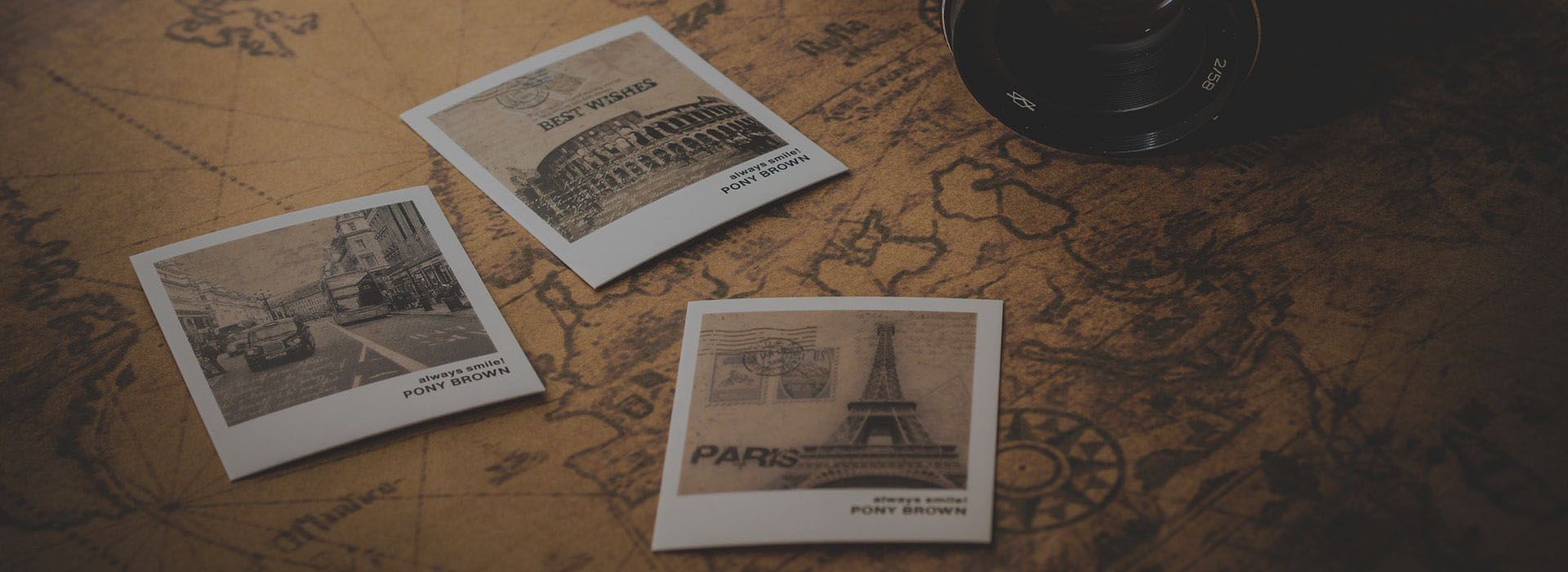Beijing
Beijing – The Nation’s Capital
Beijing is one of the six ancient cities in China and is the modern-day capital of the People’s Republic of China. Located in northern China, the city covers an area of more than 16,410 square kilometres and now has a population of almost 15million people.
Tiananmen Square
Tiananmen Square is the largest central city square in the world and serves as one of Beijing’s symbols. This huge square has an area of 440,000 square metres and can accommodate upwards of one million people and is located in the heart of the city. There are daily flag ceremonies in the square, performed at sunrise and sunset each day, and if time permits are well worth the time to visit. The square is surrounded by a number of significant buildings including the Great Hall of the People built in 1959 and the Chinese National Museum which was formed in 2003 by a combination of the Chinese History Museum and the Chinese Revolutionary Museum. In Tiananmen Square you will also find the Mao Zedong Memorial Hall located on the south side of the Square. Here, Chairman Mao’s body lies in a crystal coffin and every day you will find long queues of people waiting to visit. You will also find the elegant and beautiful Tiananmen Tower which was originally built in 1417 during the Ming Dynasty. This was originally the front door of the Forbidden City and no one could enter the Tower except for the Royal family and aristocrats.
The Forbidden City
The magnificent Forbidden City, now often known as the Palace Museum, is the largest and arguably one of the best-preserved Imperial Palace complexes in the world. For five centuries, it functioned as the administrative centre of the country as well as being the residence of Emperors and Empresses of the Ming (1368 – 1644) and the Qing (1644 – 1911) dynasties. It covers an area of 74 hectares and originally housed 9,999 rooms, with now over 8000 restored. It was originally surrounded by a moat six metres deep and a ten metre high wall. Construction of the Forbidden City began in 1407 and was completed fourteen years later in 1420. It was said that a million workers including one hundred thousand artisans were driven into the long-term hard labour to complete the complex. Listed by UNESCO as a World Cultural Heritage Site in 1987, the Forbidden City is now one of the most popular tourist attractions world-wide.
The Great Wall of China
The Great Wall is one of the ‘Eight Wonders of the World’ and in 1988 was listed in the UNESCO World Heritage Directory. The only man-made structure visible from space, this immense wall originally spanned almost 6,700 kilometres from Shanhaiguan Pass in the east to Jiayuguan Pass in the west. Built originally to keep out the marauding raiders from the North, most now lies in ruins, with the best parts close to Beijing preserved at Badaling; Mutianyu; Simatai and Jinshanling. The most popular being at Badaling because of its easy access and local facilities.
The Great Wall of China – Badaling
By far the most popular part of the Great Wall of China to visit and only 80 Kilometres from the heart of Beijing, Badaling provides easy access for a visit to China’s ultimate icon. The Badaling section of the Great Wall was built during the Ming Dynasty (1368 to 1644). Visited by millions of visitors each year, this section of the great Wall has been carefully restored and was opened to visiting tourists in late 1957.
This popular section of the Great Wall of China offers easy access and facilities. It is optional to take a cable car to the top of the Badaling section.
The Great Wall of China – Mutianyu
The Mutianyu section of the Great Wall of China is one of the best preserved sections of the Great Wall of China. Dating back over 1500 years, Mutianyu featured as the Northern barrier of the Great Wall and offered protection to the city and the Imperial tombs. Set amongst the tress with mountains as a back drop, Mutianyu is not as busy as Badaling.
Mutianyu is 2.5 kilometres long and was heavily fortified with 3 watch towers, one large and two small. This style of architecture is quite unique and rarely appears along other sections of the 6,000+ kilometres of the Great Wall
If you are feeling adventurous there is a Cable car (up) and Toboggan ride (down) to enjoy
The Great Wall of China – Simatai
A listed world heritage site, the Simatai section of the Great Wall of China is further away than Mutianyu and Badaling, 120 kilometres from Beijing. North East of the city, the Simatai section was originally built in the Qi dynasty over 1500 years ago. During the time of the Ming Dynasty (1368 to 1644) the 5 kilometre section of the Great Wall received a face lift and to date is one of the best examples of the traditional Ming style.
Simatai was regarded as a key strategic point on the Eastern side of the Great Wall; visitors can view all the way to Beijing from the Wangjinglou watch tower.
Simatai is more rugged and less developed than other sections of the Great Wall and attracts fewer tourist visits as a moderate level of fitness is required due to the terrain. It is this terrain that tells of an interesting story of the Simatai sections creation – with mountain goats used to carry bricks, one by one across the difficult landscape.
The Great Wall of China – Jinshanling
Located 130 kilometres form Beijing and 10 kilometres from the Simatai section, Jinshanling is one of the larger sections of the Beijing Great Wall at 11 kilometres. It is possible to spend a day walking between Simatai and Jinshanling (wear comfortable shoes!)
Jinshanling features 67 towers. This section of the Great Wall was built under the direction of the Ming Dynasty General Xu Da, and whilst restoration has occurred close to the entry point at Jinshanling, the Wall deteriorates to its original condition the closer it nears Simatai.
The Temple of Heaven
The Temple of Heaven was built in 1420 during the Ming Dynasty and has an area of about 2,700,000 square metres. The Temple was built to offer sacrifice to Heaven. The Temple of Heaven is enclosed with a long wall. The northern part within the wall is semicircular, symbolizing the heavens and the southern part is square symbolizing the earth. The northern part is higher than the southern part. This design shows that the heaven is high and the earth is low and the design reflected an ancient Chinese thought of ‘The heaven is round and the earth is square’. The main buildings of the Temple lie at the south and north ends of the inner part. The most notable buildings are The Circular Mound Altar; the Imperial Vault of Heaven and the Hall of Prayer for Good Harvest. Also, there are some additional buildings like Three Echo Stones and Echo Wall. Almost all of the buildings are connected by a wide bridge called the Vermilion Steps Bridge.
The Summer Palace
The Summer Palace is located 15 kilometres from central Beijing, is the archetypal Chinese garden, and is ranked amongst the most noted and classical gardens of the world. In 1998, it was listed as a World Heritage Site by UNESCO. Constructed in the Jin Dynasty (1115-1234), it was extended continuously. By the time of the Qing Dynasty (1644-1911), it had become a luxurious royal garden providing royal families with rest and entertainment. Originally called ‘Qingyi Garden’ (The Garden of Clear Ripples), it was know as one of the famous ‘Three hills and Five gardens’, (these being Longevity Hill; Jade Spring Mountain and Fragrant Hill; The Garden of Clear Ripples, the Garden of Everlasting Spring, the Garden of Perfection and Brightness, the Garden of Tranquillity and Brightness, and the Garden of Tranquillity and Pleasure). Like most of the gardens of Beijing, it could not elude the rampages of the Anglo-French allied force and was destroyed by fire. In 1888, the Empress Dowager Cixi embezzled navy funds to reconstruct it for her own benefit, changing its name to the Summer Palace. She spent most of her later years there, dealing with state affairs and entertaining. In 1900, it suffered again, being ransacked by the Eight-Power Allied Force. After the success of the 1911 Revolution, it was opened to the public. Composed mainly of Longevity Hill and Kunming Lake, The Summer Palace occupies an area of 294 hectares, three quarters of which is water. Guided by nature, artists designed the gardens exquisitely so that visitors would see marvellous scenery and be amazed by the perfect examples of their refined craftwork using the finest of materials.
The Ming Tombs
Located some 50 kilometres Northwest from Beijing City lays the Ming Tombs, a general name given to the mausoleums of 13 Emperors of the Ming Dynasty (1368 – 1644). The mausoleums have been well preserved, as has the necropolis of each of the many emperors. Because of its long history, palatial and integrated architecture, the sites have a high cultural and historic value. The layout and arrangement of all thirteen mausoleums are very similar but vary in size as well as in the complexity of their structures. It was originally built only as Changling, the tomb of Emperor Zhu Di and his empresses. This is the most magnificent of the tombs. The succeeding twelve emperors had their tombs built around Changling. Only the Changling and Dingling tombs are open to the public. Changling, the chief of the Ming Tombs, is the largest in scale and is completely preserved. The total internal area of the main building is 1956 square metres. Dingling is under ground and about 27 meters deep. It is the mausoleum of Emperor Zhu Yijun, the thirteenth emperor who occupied the throne the longest during the Ming Dynasty (1368 to 1644).
The Hutongs
The Hutongs are narrow lanes among courtyard houses. The history of the Hutongs can be traced back to the Yuan Dynasty (1271 – 1368). After the establishment of the Yuan authority, the nobles were pleased to be awarded with certain pieces of land as feudal estates. They actively built houses and courtyards which were arranged in order around water wells. The passages between houses were left to allow for light and ventilation and a convenient right-of way. Though these countless passages crisscrossed the old capital like a chessboard, there were only 29 of them called Hutongs. Because city planning was very strict at that time, the roads which measured 36 metres wide were called main streets, the 18-metre wide roads were named side streets and those nine metres or less were designated as Hutongs. In the Ming (1368 – 1644) and the Qing (1644 – 1911) Dynasties, city planning was less strict. Stallholders squeezed in the residential districts, which made the Hutongs differ in width from over six metres to less than one metre. The basic appearance of Hutongs was generally formed during these periods with many having just one entrance. The Hutongs are best seen by Pedicab or cycle rickshaw and from here you will get an interesting glimpse into the lives of the traditional Beijing citizens.
Beijing Zoo
If your China journey will not take you to the West of China to view the Giant Panda in its natural habitat, then Beijing Zoo might you offer you the next best option.
Beijing Zoo offers a park like setting with a traditional Chinese garden style.
In addition to China’s iconic Panda , there is the opportunity to experience rare and unique wild life such as the Golden snub nosed Monkey from Sichuan province, Manchurian Tigers, the smaller and less well known Red Panda and many other species from around the world.
Formally opened in 1908, the Beijing Zoo is on the site of an Imperial Manor from the Ming Dynasty (1368 to 1644). Later plant and animals were cultivated and grown here during the Qing Dynasty (1644 – 1911).
Beijing Zoo has also been the home of the Beijing Aquarium since 1999.
Lama Temple (Yonghe Temple)
The Lama Temple is one of the largest and most relevant Tibetan monasteries in China. It is credited as being the largest Tibetan temple outside of Tibet itself.
The Temple is unique as it houses the artworks of both Tibetan and Han nationalities. Construction began in 1694 during the Qing Dynasty by the Prince Yin Zhen who would later ascend to the title of Emperor in 1722. As the Emperor, the Lama Temple was divided into two, half remained as an Imperial palace, and the other was offered to Tibetan Monks as a monastery.
The temple is set in a North to South direction spanning almost 500 metres. Halls and Temples include the Hall of the Heavenly (Devaraja Hall), the Hall of Harmony and Peace, Hall of Everlasting Protection the Hall of the Wheel of the Law and the Pavillion of Ten Thousand Happiness’s
The Lama Temple makes a great addition to a tour of The Forbidden City and Tiananmen Square.
Coal Hill Park
Coal Hill is a park located north of the Palace Museum near the Forbidden City. In times gone by, Coal was heaped at the foot of the hill to be transported for heating the Imperial residence. Emperors might visit the hill to relax or even dine at the top of the hill. Once you have climbed to the top of Coal Hill you will be able to enjoy good vies of this majestic city.
Olympic Stadium ‘Birds Nest’
It all began on 08.08.08 at precisely 08:08pm and was regarded as the greatest Olympics in modern history. Now, there is the opportunity to enjoy a visit to some of the incredible venues built specifically for the Beijing 2008 Olympic Games
The Birds Nest was the centre piece of the Olympic Games hosting amongst others the Opening and Closing ceremonies with a capacity of 91,000. The stadium has a unique look and takes centre stage amongst the key Olympic venues. With over 100,000 tombs of steel the stadium is the largest steel structure in the world
Across from the stadium is the Water Cube used for swimming and diving events. By night the water cube changes colour and shape. With seating up to 17,000 the water cube was the site of 25 new world records during the Olympic Games.
Beijing Opera
Regarded as a ‘living treasure’ of Chinese culture, Beijing or Peking Opera is the combination of music, mime and dance. The Opera is theatrical and appeals to all levels of Chinese society. Elaborate costumes and pantomime make for an enjoyable and authentic experience when visiting China.
With a history of over 200 years, Beijing Opera combines stories of the important historical events of the Emperors and their dynasties with graceful dancing, beautiful backdrops, exquisite costumes and acrobatic fighting. In the western world, opera often suggests formal dress and an experience only offered to aristocracy. However, due to its evolving nature and historical undertones, Beijing Opera has always appealed to the masses.
Enjoy an insight into China of yesterday through the sights and sounds of Beijing Opera.
Beijing ‘Kung Fu’
The philosophy and skill of the martial art of Kung Fu is illustrated through story-line, dramatic design, choreography and breath-taking music. Kung Fu moves are often interpretation of movements from animals or stories from the past. Kung fu training aims to harness the ‘qi’ or internal energy flow
This performance offers so much more than the forgettable western concept of performers chopping wooden boards in half.
Peking Duck Dinner
Dating back to at least 1300AD, Peking Duck was once for the Imperial family only, but is now one of the most delicious offerings of Chinese cuisine.
China Holidays offers our guests the opportunity to try this delicacy at many restaurants including the world famous Quanjude Duck restaurant.
The process of Peking Duck is much more complex than roasting the bird with a strict press to follow to achieve the authentic presentation and taste.
Your Chef will present the Roasted Duck at your table and carve the succulent meat in a style that makes the most of every mouthful.
A great way to taste Beijing!


